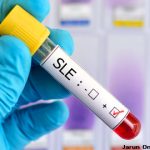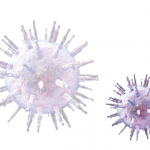In two SLE autoantibody systems, the earliest autoantibody that appears to form also binds a protein from Epstein-Barr virus, a possible clue to the origin of autoimmunity in SLE. Studying the epidemiology of the Epstein-Barr virus may provide connections of this virus to SLE, Dr. Harley explained. However, 90% of adults carry Epstein-Barr, and most are infected between ages 12 and 16. So, Dr. Harley and his colleagues looked into seropositivity against Epstein-Barr in children.
Pediatric SLE patients mounted a more frequent and apparently different immune response to the Epstein-Barr nuclear antigen 1 (EBNA-1) antibody compared to control subjects, he said. SLE patients may, early on, develop autoantibodies directed against EBNA-1. In addition, there is a 15- to 40-fold increased Epstein-Barr virus load in patients with SLE, and an increased expression of Epstein-Barr–specific cells, he said. “The critical moment might be when the hetero-immune antibodies to EBNA-1 become autoantibodies binding to the SLE-specific antigens,” Dr. Harley noted. “It probably doesn’t take that much to make the transition to autoimmunity.”
Infection with the Epstein-Barr virus may be one of the key environmental risk factors for developing the autoimmunity of SLE, along with certain genes, sex, and ancestry. Vitamin D deficiency may also play a role, he noted. In conclusion, Dr. Harley recommended a clinical trial of hydroxychloroquine plus aspirin in preclinical SLE patients to determine whether this therapy would prevent SLE before the disease develops.
Susan Bernstein is a writer based in Atlanta.



